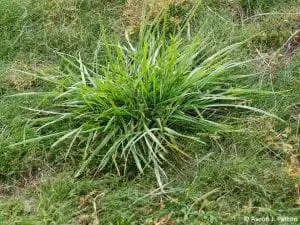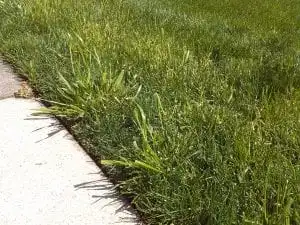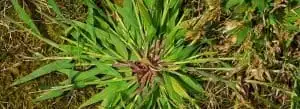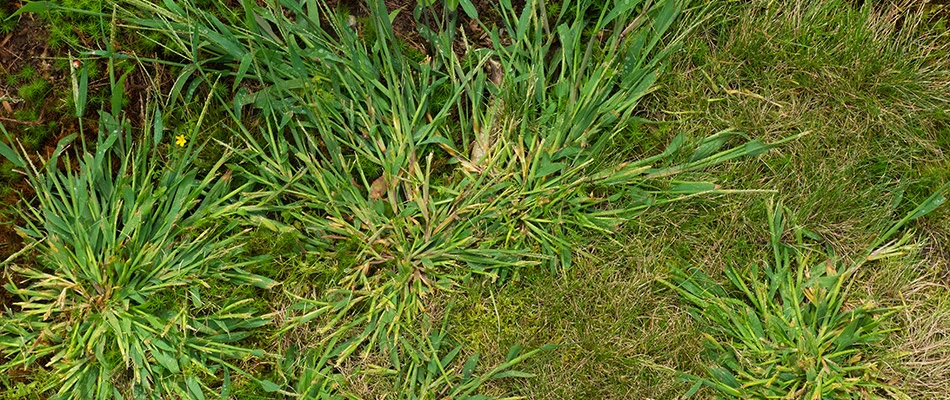Tall fescue grass and quackgrass are often mistaken for crabgrass. Although they look very alike, they are very different. Tall fescue and quackgrass are cool-season perennial grasses, whereas crabgrass is a warm-season annual grass. One of the ways to identify both of these grasses is that they will both be up and awake before the rest of your lawn. Crabgrass does not start coming up until quite a bit later into the early summer. The solutions for eradicating them are also very different. However, the long term solutions are remarkably alike. A thick lush lawn. The reason that quack grass and tall fescue grass are hard to get rid of is right in their name, grass. So they seem like a weed because of how out of place they look in a nice fine fescue or bluegrass lawn, but they’re not.
The Common Issue: Mistaken for Crabgrass
 Tall Fescue
Tall Fescue Quackgrass
Quackgrass Crabgrass
CrabgrassQuackgrass is recognized easily because it is usually taller than other desirable grasses. The tapered blades are thicker than normal blades of grass. Each blade is usually slightly thicker than 1/4 inch and then wraps around the hollow stem.
Upon touching you’ll realize that the grass blades have a sandpaper-like feeling. The roots of quackgrass are thick and white and the root stem sends out roots and shoots from its nodes, this is called rhizomes. This root structure makes it very difficult to get rid of.
Tall fescue is often recognized for its clumping growth habit and its tall wide blades of dark green grass. The top of the grass blades are shiny and the blades are very coarse to the touch. Tall fescue has small rhizomes as its root structure but it does not spread through the root structure the same way as other grasses. It spreads through its seeds being blown into other parts of the lawn.
What Should I Do About It?
Because these are grasses, there isn’t a selective herbicide that will kill these grasses without killing the surrounding desirable grasses. There are 2 methods of removal for both quackgrass and tall fescue. The 1st method of removal would be by using a non-selective herbicide such as glyphosate or an alternative to glyphosate, offering broad-spectrum weed control. After waiting 10 to 14 days you would be able to rake up the dead grass and sow in new desirable grass seed in that area.
The 2nd method would be to pull it or use a shovel and dig it out. You’ll need to have some dirt and desirable grass seed ready to go. The biggest problem with both of these methods is that it doesn’t mean that you’ll completely be out of the woods. It is quite common for these seeds to blow in from a different source and you’re back to the same exact problem. The best defense against these grasses/weeds and many others is to not give them the vacancy they need to get rooted.
A thick lush lawn doesn’t allow for the space that many of these weed seeds need to find soil and germinate. Be sure that you’re on a good weed control and fertilization program and that you’re doing overseeding in the fall as needed to make sure that your lawn is as thick as possible. Aeration is also very critical in keeping the lawn thick. One other large contributing factor to mention is the way that you mow your lawn.
We’ve linked tools and products in this article that may help you complete this work yourself. As an Amazon Associate we earn from qualifying purchases.




Comments (0)
Thanks for your comment!
Thanks for your feedback! Your comments have been successfully submitted! Please note, all comments require admin approval prior to display.
Error submitting comment!
There is a problem with your comment, please see below and try again.